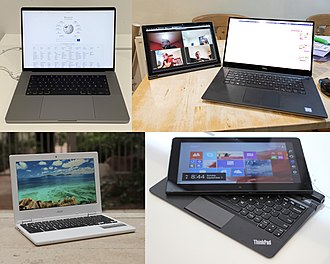Is your laptop touchpad moving on its own? Here’s how to fix it.
Clean and Maintain the Trackpad
Do not apply excessive pressure when cleaning the trackpad, as this could cause damage to the sensitive components underneath. Use a cotton swab lightly dampened with water to clean around the edges of the trackpad and remove any built-up dirt or grime.
It’s important to keep the area around the trackpad clean as well, as dust and debris can affect its performance. Regularly wipe down the surrounding keyboard and palm rest with a soft cloth to prevent particles from getting into the trackpad mechanism.
If you notice any issues with the trackpad, such as it moving on its own, consider checking for any device driver updates or adjusting the sensitivity settings in the Control Panel on Windows or the equivalent settings on other operating systems. If the problem persists, it may be a hardware issue that requires professional attention. If your laptop is still under warranty, contact the manufacturer for assistance.
Adjust Sensitivity and Pointer Settings
To adjust the sensitivity and pointer settings on your laptop touchpad, start by accessing the Control Panel on your Windows operating system. Once in the Control Panel, locate the “Mouse” or “Touchpad” settings.
Adjust the sensitivity by moving the slider to the left to decrease sensitivity or to the right to increase sensitivity. Test the touchpad after each adjustment to find the optimal setting for your use.
You can also change the pointer settings to customize the speed and appearance of the cursor. In the Mouse or Touchpad settings, look for the “Pointer Options” tab. From there, you can adjust the pointer speed and enable features such as pointer trails or the option to show the location of the pointer when you press the CTRL key.
If you are still experiencing issues with your touchpad moving on its own, it may be worth updating the device drivers for your touchpad. Visit the manufacturer’s website to download and install the latest drivers for your specific touchpad model.
By adjusting the sensitivity and pointer settings, as well as updating your device drivers, you can troubleshoot and potentially fix the issue of your laptop touchpad moving on its own.
Update or Reinstall Device Drivers
Next, open the Control Panel on your Windows laptop and navigate to the Device Manager. Locate the touchpad device under the “Mice and other pointing devices” section. Right-click on the touchpad and select “Update driver.” Choose the option to manually search for driver software and browse to the location where you downloaded the new touchpad drivers. Follow the on-screen instructions to complete the installation.
If updating the driver doesn’t resolve the issue, you may need to uninstall the current touchpad drivers and then reinstall them. In the Device Manager, right-click on the touchpad and select “Uninstall device.” Once the drivers are uninstalled, restart your computer. Windows should automatically reinstall the touchpad drivers upon reboot. If not, use the downloaded drivers to manually install them as previously described.
After updating or reinstalling the touchpad drivers, test the touchpad to see if it is still moving on its own. If the issue persists, there may be a hardware problem with the touchpad itself, and you may need to contact the manufacturer for further assistance.
Investigate and Resolve Hardware Issues
- Check for driver updates:
- Open Device Manager by pressing Windows key + X and selecting Device Manager.
- Expand the category for Mice and other pointing devices and right-click on your touchpad driver.
- Select Update driver and follow the on-screen instructions to check for and install any available updates.
- Test in Safe Mode:
- Restart the laptop and press F8 repeatedly as it boots up to enter Safe Mode.
- Check if the touchpad still moves on its own while in Safe Mode, which can help determine if the issue is related to software or hardware.
- Check for loose connections:
- Shut down the laptop and remove the battery if possible.
- Open the laptop’s casing and check for any loose connections or damaged components near the touchpad.

- Re-secure any loose connections and replace any damaged components if necessary.
